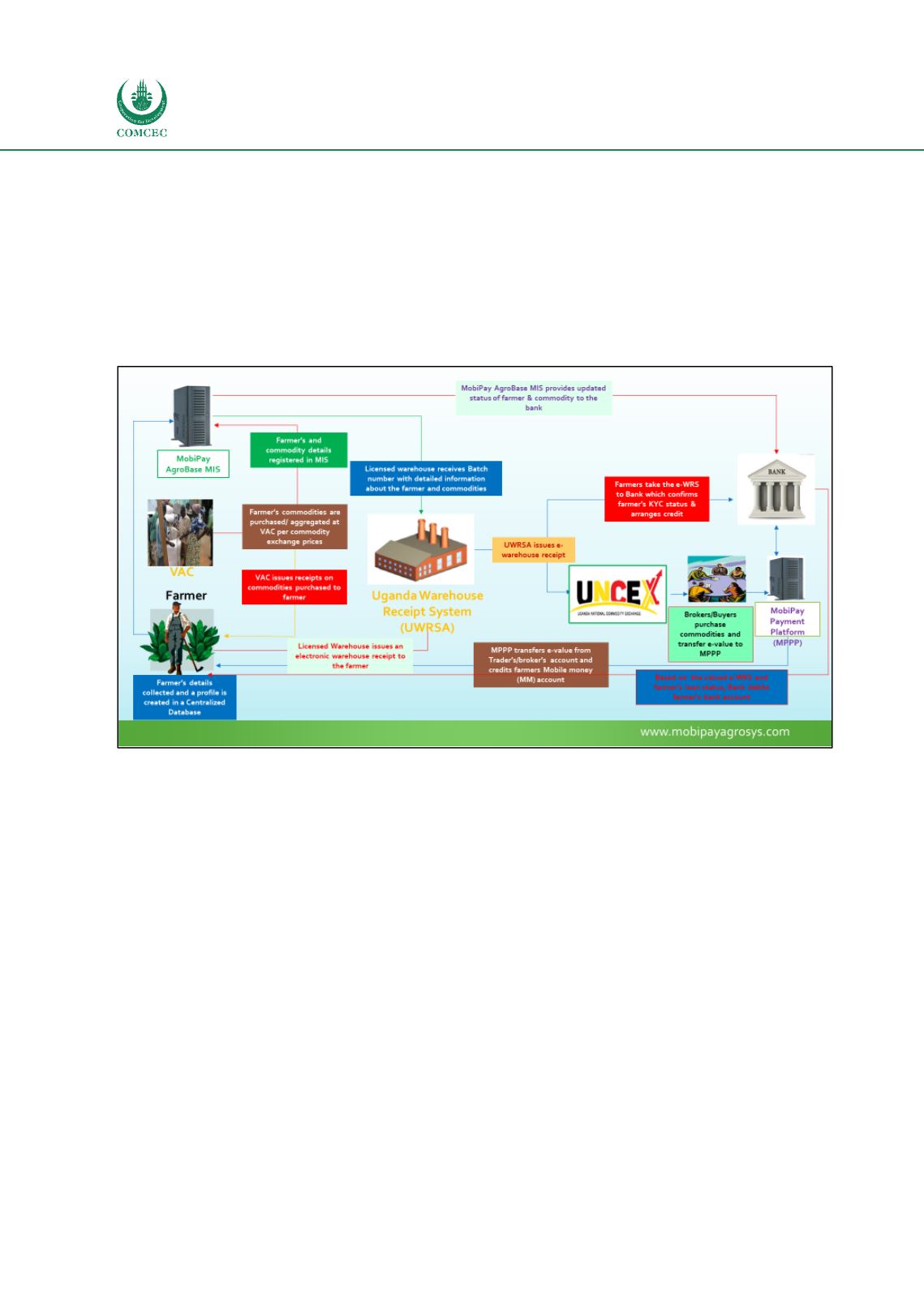

Improving Agricultural Market Performance:
Developing Agricultural Market Information Systems
104
particular implication of this is that though the system is expected to promote formal trade, for
example in grains, its impact in that regard is marginal. This is because it does not report quality-
linked prices and, therefore, exerts a weak or no effect on price incentives for producers to adopt
postharvest crop handling practices which assure premium quality for grains. This is a major
challenge in the grain production system in Uganda (Onumah and Nakajjo, 2014). It is
anticipated that as exchange trading takes off this issue will be addressed because players in the
grains value chains will become aware of quality premiums in the market based on
dissemination of quality-linked prices.
Figure 41:
MIS/Payment System for Newly-Established Uganda National Commodity Exchange
Source: Mobipayagrosys, Uganda
7.5
ASSESSMENT OF EXISTING MIS IN UGANDA
The discussions in this section have shown that the MIS landscape in Uganda is populated with
a wide range of platforms. Having been one of the pioneers with FOODNET, a 1GMIS in the
1990s, Uganda currently has MIS of all types, including those with national, regional and
international coverage. As shown in Table 5, there are also government and private-operated
MIS as well as platforms run by NGOs. The assessment of existing MIS in Uganda, which we
report in this subsection, partly involved interviews with stakeholders including farmers’
groups, grain traders, warehouse operators, bankers, insurance company executives, NGOs,
development practitioners and policymakers, in particular from the Ministries of agriculture
and Trade as well as Bank of Uganda (the country’s central bank).
Among the stakeholders consulted a high number were either unaware of or dissatisfied with
the existing MIS. As a result, most of them resort to alternative sources of information as the
summary below indicates:


















